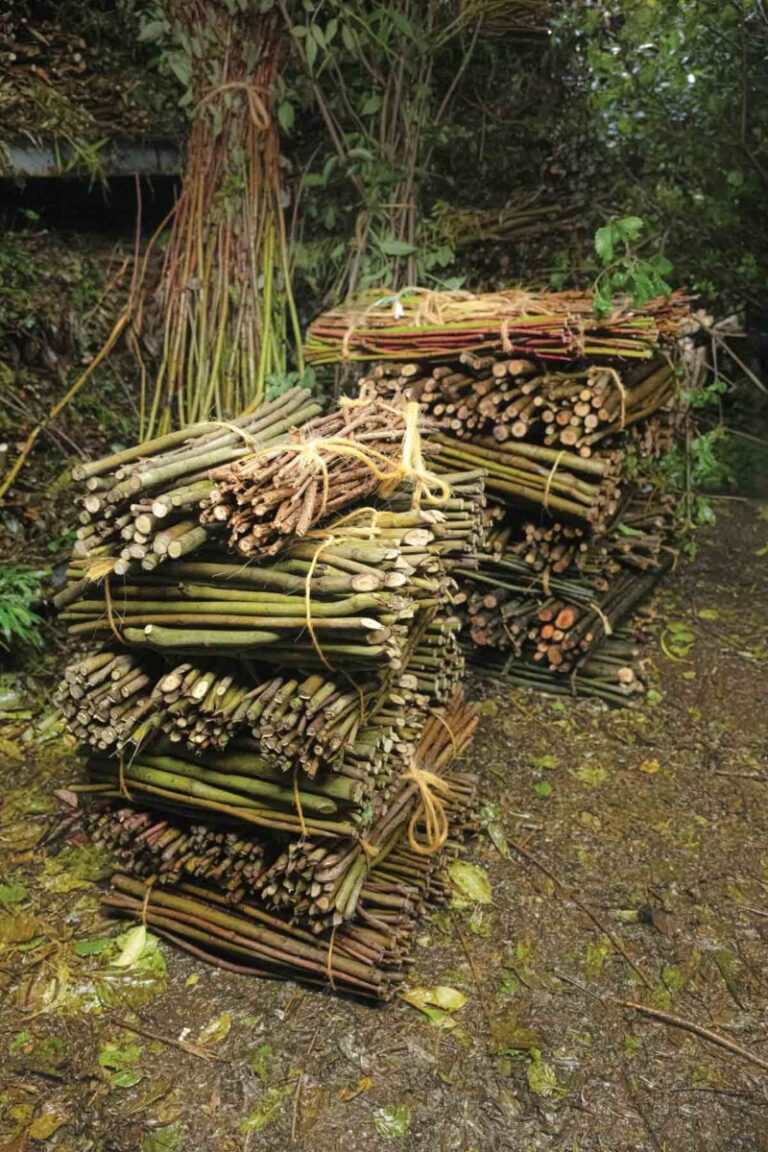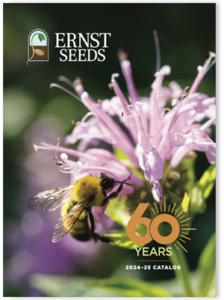Erosion control is the practice of stabilizing soil. It’s critical for preserving biodiversity, water quality, and overall soil health in your meadow or landscape.
There are many ways to achieve erosion control. Some methods involved hard engineering using large equipment, concrete, artificial barriers, and expensive tools. However, bioengineering techniques for erosion control can be just as effective and far more manageable for the average meadow owner.
These techniques are especially valuable for sites near streambanks, gullies, and steep slopes, where water or the landscape itself can destabilize the soil.
In this guide, we’ll explain the role of vegetation in erosion control and provide you with some proven methods to stabilize your soil.
Why Erosion Control Matters
Establishing a native meadow can be challenging, even under great conditions. Sites where erosion and runoff are constant threats require even more planning and precision. Understanding why and how to use bioengineering techniques for erosion control is the perfect sustainable solution.
Protecting the Local Environment with Creative Planting Solutions
Utilizing live plants to stabilize or reinforce your soil is inherently eco-friendly and cost-effective. Aside from the relative ease of these solutions, they’ll have tremendous benefits to your meadow or landscape.
Erosion control protects your soil–keeping it in place and giving your plants the stability they need to flourish. It also protects local waterways from being overloaded with sedimentation, further enhancing biodiversity and water quality.
Example of A Real-World Application
Here is one example of real-world use of soil bioengineering techniques for erosion control that could inspire your project:
In Jacques-Cartier Park in Quebec City, landscape architects utilized case soil bioengineering techniques to address streambank erosion while enhancing habitat, aesthetics, and water quality.
The project involved replacing contaminated soils with a sand/clay mix and stabilizing slopes with live fascines and coir erosion control fabric, fostering the development of natural, maintenance-free plant communities. Read more about it here.
Using Vegetation for Erosion Control
Bioengineering techniques for erosion control refer to using plants to perform engineering functions like stabilizing slopes or minimizing erosion. They are cost-effective, sustainable, and environmentally friendly alternatives to hard engineering methods. Here are a few reasons why you should get familiar with these methods for the long-term health of your meadow:
How Plants Can Prevent Erosion
Plants can be utilized to prevent erosion in several ways. Most obviously, the roots of plants infiltrate and stabilize soil, providing reinforcement that holds soil in place. Vegetation also slows surface runoff and improves the soil’s moisture absorption.
Plants that are effective for this purpose include shallow to deep-rooted species, such as Red Osier Dogwood (Cornus sericea). Fibrous-rooted species for surface stability and bioengineering include Salix spp. (willows), switchgrass, or native wildflowers.
However, simply planting native vegetation is far from the only way you can use plants for erosion control. Other methods include:
Pole Drains
A live pole drain is a tight bundle of living cuttings that can be used to stabilize slumping soils. The bundles are placed in a shallow trench so that they intersect and collect as much moisture as possible. The plants used to form the drain will sprout and grow while moisture continues to drain from the lower end.
Silt Fences
A live silt fence is a row of cuttings stuck to a streambed. It slows the flow of water and causes sediments to be deposited. It can be used to reduce sediment movement, reducing the impact of erosion on a site. Once the cuttings grow, they’ll create a brushy area typical of natural seepage areas and small streams.
Live Staking
Live staking is a common and simple form of bioengineering for erosion control. It’s the practice of using living cuttings to pin sods to a slope. The growth of the roots bind unstable materials, preventing silty material from flowing.
Using Plants to Stabilize Slopes
You can also use plants to stabilize soil near steep slopes.
Wattle Fences
A wattle fence is a short retaining wall made from live cuttings. On an oversteep slope, these walls will hold the soil in place, giving other plants the stability they need to establish. The living cuttings will eventually sprout, providing more strength and stability for the structure as it grows.
Modified Brush Layers
This is the practice of using a log or board to support a live brush layer on a slope. The log provides a stable platform for the brush and also serves as a protective shield against rolling rocks and sediment that might otherwise damage vegetation. The log will eventually rot, but by that time, the vegetation will have had time to establish themselves and begin to stabilize the soil.
Reinforcing Soil with Plants
Live plants can also be used to reinforce the soil at disturbed sites, or sites where overhangs have formed naturally.
Brush Layers
When fill is required, such as after a road has been pulled back or deactivated, live brush layers can be used to strengthen the fill material. They increase the soil’s shear resistance, preventing circular failures.
Live Staking of Sods
The grass and legume cover required for cut and fill slopes by the Forest Practices Code can tend to peel off of the slope. Live staking of sods, using cuttings of at least 40 to 50 cm, is a method to hold the sod in place and allow the roots to infiltrate.
These are just a few ways you can use plants to stabilize, reinforce, and protect your soil if it’s in an area prone to erosion.
Learn More about Bioengineering Techniques for Erosion Control from the Experts at Ernst
Bioengineering techniques such as live staking, pole drains, and wattle fences are powerful tools for erosion control. They offer sustainable, cost-effective solutions to stabilize soil and protect the surrounding environment. They work by harnessing the natural strength of plants to reinforce soil, reduce runoff, and protect waterways from sedimentation, all while promoting biodiversity and healthy ecosystems.
Whether you’re managing a streambank, steep slope, or other erosion-prone area, these strategies can enhance your meadow or landscape’s resilience and long-term success.
If you’re looking for expert guidance on implementing these techniques or sourcing the right plant species for your project, the team at Ernst Conservation Seeds is here to help. With decades of experience and a wide selection of native seeds, we can provide the tools and knowledge you need to make your erosion control project a success.
Contact us today to get started.


